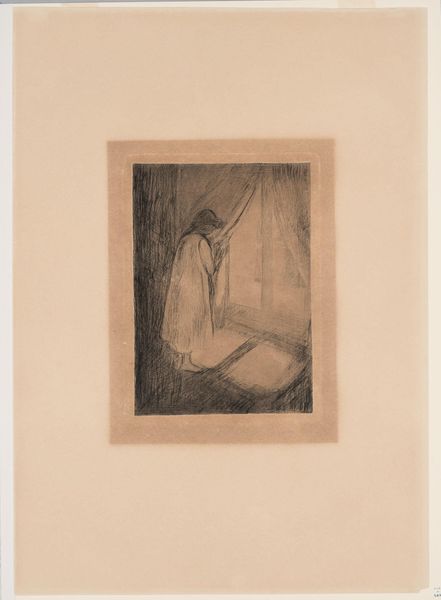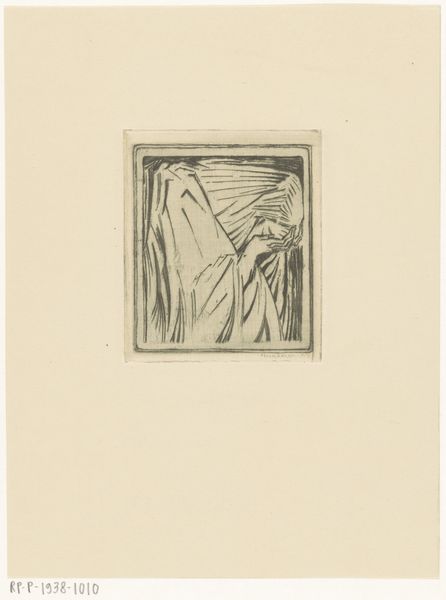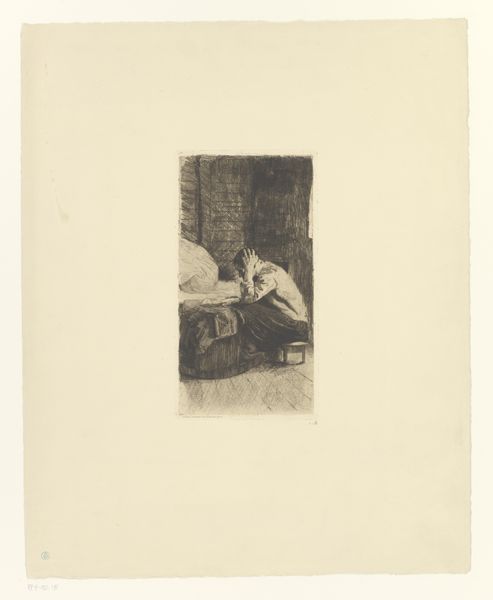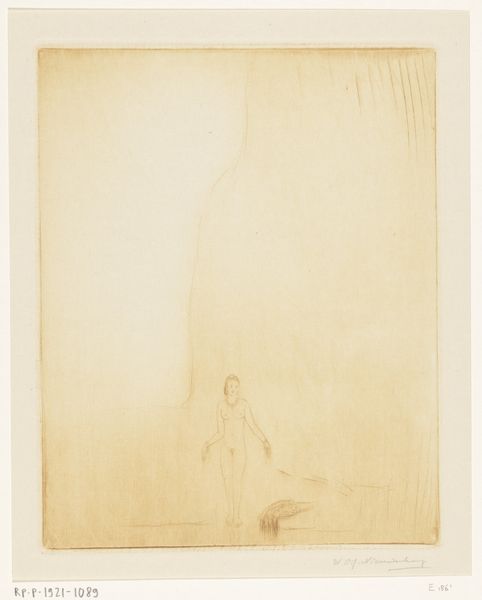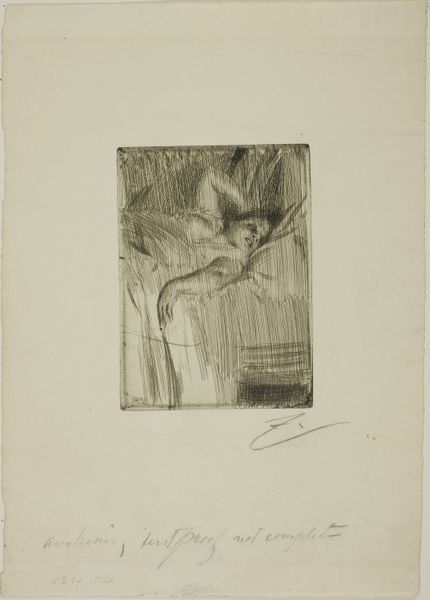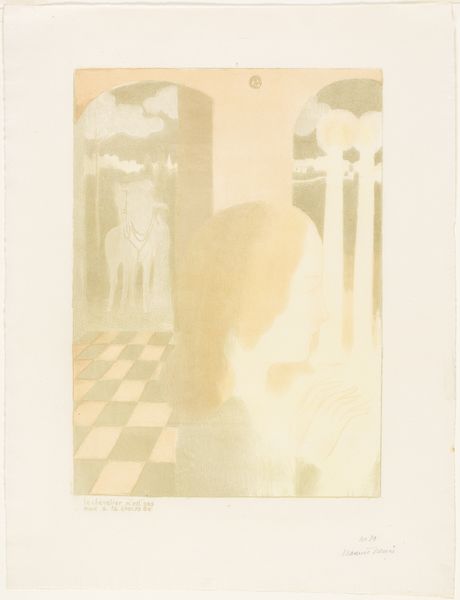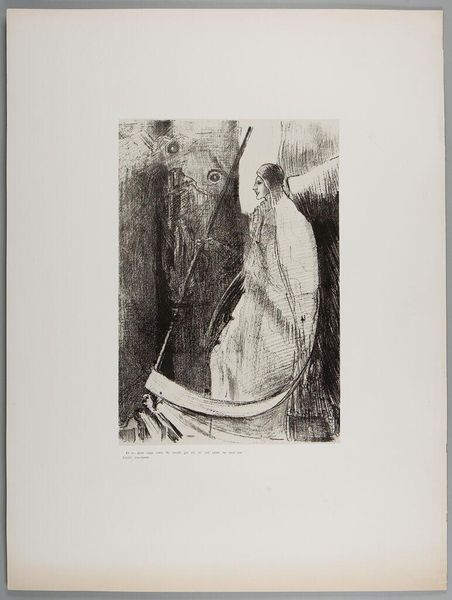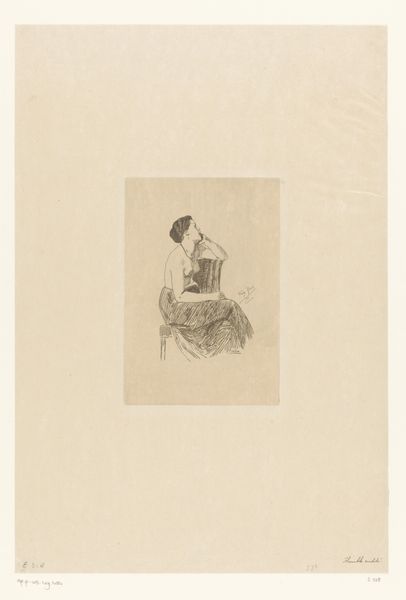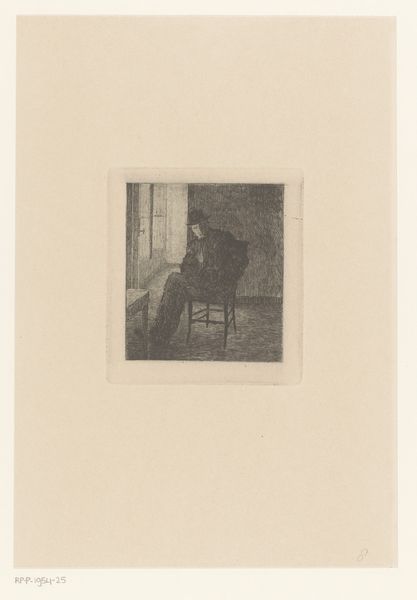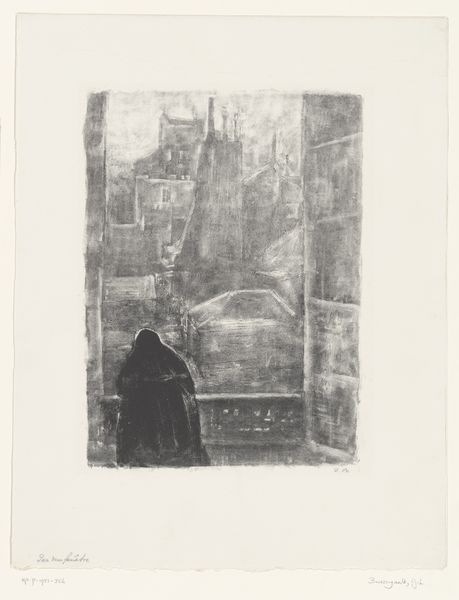
Dimensions: 217 × 157 mm (plate); 481 × 345 mm (sheet)
Copyright: Public Domain
Editor: We’re looking at Edvard Munch's “The Girl at the Window,” created in 1894 using etching. The piece evokes such quiet introspection, the stark contrast really draws me in. What’s your take on it? Curator: From a materialist perspective, let's consider the etching process. The lines, etched into a metal plate and then printed, suggest a deliberate, laborious creation. Think about the physical act, the worker, in creating those lines, producing multiples in potentially large number for distribution to middle class homes. Where was this etching made, how does its location affect its reception and status? Editor: That’s a fascinating point about labor! It moves the focus away from just the emotional aspect often associated with Munch. How does this process speak to its accessibility? Curator: Exactly. Etchings, being reproducible, challenge the unique aura of painting, a traditional benchmark of high art, therefore blurring those lines. Now consider the window itself - the physical barrier separating interior and exterior, viewer and viewed, artist and muse. What's the significance of the raw material of the building where she’s situated? Editor: So the window is a frame, but also an architectural material connecting and separating worlds. Is it like the metal plate being etched—a kind of manufactured division? Curator: Precisely. It also begs the question, where does the material come from and where does the financial resources derive from to produce the raw building components? Are there certain laborers from certain areas who built the wall around her? The industrial production, the social strata… it’s all embedded in the seemingly simple scene. Editor: I hadn’t considered the industrial context so explicitly. It gives the artwork so much more to think about. Thank you! Curator: It certainly allows us a deeper dive beyond a sole narrative.
Comments
No comments
Be the first to comment and join the conversation on the ultimate creative platform.
